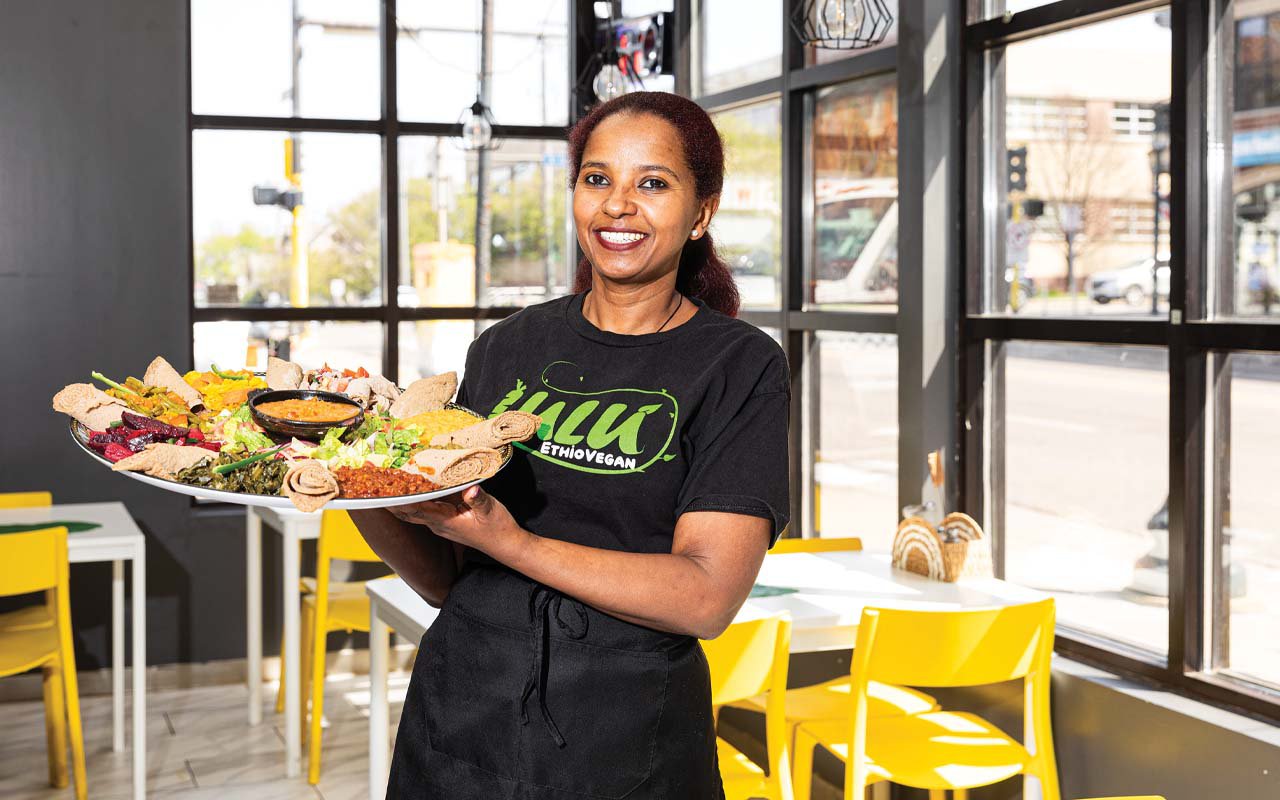She paused to let me consider her tray, and as she did, a cloud of smoke raced ahead of her, enveloping our table in fragrance. On one side of the tray: a pan of green coffee beans, source of the sizzling and popping, mid-journey to roasting black in a long-handled metal pan. On the other side: a perforated lantern with incense pouring forth in a white cloud. Between the two smoking vessels: tiny coffee cups cradled by tiny saucers. The server left us with the incense and tray and returned the coffee beans to the kitchen. When these freshly roasted beans came back to us, ground and steeped, they were inside a jet-black jebena, an Ethiopian coffee pot, oven-hot, set to rest inside a colorful ring basket on our tray. Decanted into tiny cups, the coffee was dark, intense, smoky, need I even say fresh—but it felt like something more important than coffee. It was a reminder that “coffee culture” is not a thing that originated in Seattle. It has literal roots in Ethiopia, the native home to the woody evergreen that makes the berries that hold the seeds that make our mornings bright.
I asked the server what was inside the incense burner. It looked like charcoal; it smelled like church.
“Frankincense,” she answered.
Frankincense? Like the stuff the three kings brought to the baby in the manger? That frankincense?
Indeed.
Jesus! That baby born near the eastern shores of the Mediterranean who gave us eternal wisdom. You know what happened next: Some of his followers set up a church in Rome. Simultaneously, though less well-known in the West, others set up a church in present-day Ethiopia. We call the religious organization created by the latter the Ethiopian Orthodox Tewahedo Church.



No Comment Found.